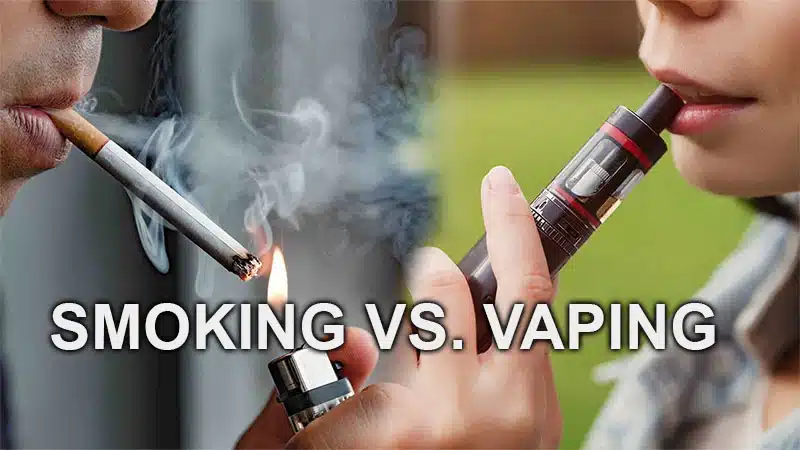
In the ongoing debate of vaping vs. smoking, understanding the key differences is essential for making an informed choice. This comprehensive guide explores the health impacts, cost, convenience, and social acceptance of vaping and smoking. By comparing these two methods, you’ll gain insight into which option may better suit your lifestyle and health goals. Whether you’re a current smoker considering a switch or simply curious about the differences, this guide provides a thorough comparison to help you understand the pros and cons of vaping vs smoking.
Complexity Analysis:
Smoking: Smoking involves the combustion of tobacco, releasing a multitude of harmful chemicals, including tar, carbon monoxide, and nicotine. The process is relatively simple, requiring only a tobacco product and a means of ignition.
Vaping: Vaping, on the other hand, is a more intricate process that uses an electronic device to heat a liquid (e-liquid or vape juice) to create an aerosol for inhalation. E-liquids typically contain nicotine, propylene glycol, glycerin, flavorings, and other additives. Vaping devices vary in design and complexity, offering options for customization and control over factors like temperature and airflow.
Effect on Health:
Smoking: Smoking is a well-known risk factor for various health issues, including lung cancer, heart disease, and respiratory illnesses. The combustion of tobacco produces tar and other harmful substances that can damage the lungs and other organs.
Vaping: Vaping is often promoted as a safer alternative to smoking, as it does not involve combustion and thus does not produce tar or carbon monoxide. However, the long-term health effects of vaping are still not fully understood. While it is generally agreed that vaping is less harmful than smoking, concerns have been raised about the potential risks of inhaling certain chemicals found in e-liquids, as well as the effects of nicotine on the cardiovascular and respiratory systems.
Price:
Smoking: Smoking can be an expensive habit, with the cost of cigarettes varying widely depending on factors such as location, brand, and taxes. Over time, the cost of smoking can add up significantly, especially for heavy smokers.
Vaping: Vaping can initially be more expensive than smoking, as the cost of a vaping device and e-liquids can be significant. However, over the long term, vaping may be more cost-effective, as the ongoing cost of e-liquids is typically lower than that of cigarettes. Additionally, the price of vaping devices and e-liquids has been decreasing as the market matures.
Public Policy:
Smoking: Public policy around smoking has become increasingly strict in many parts of the world, with regulations aimed at reducing smoking rates. These regulations include bans on smoking in public places, restrictions on tobacco advertising, and increased taxes on tobacco products.
Vaping: Public policy around vaping is still evolving, with regulators grappling with how to address this relatively new phenomenon. Some countries have implemented strict regulations on vaping, including bans on certain flavors and advertising restrictions. Others have taken a more lenient approach, viewing vaping as a potential harm reduction tool for smokers.
Social Perception:
Smoking: Smoking has become increasingly stigmatized in many societies due to its well-documented health risks. Smokers are often viewed negatively, and smoking is prohibited in many public spaces.
Vaping: Vaping, while still relatively new, has faced its own share of scrutiny. Some critics argue that vaping normalizes smoking behavior and may be a gateway to tobacco use among young people. Others see vaping as a positive alternative to smoking and a potential tool for smoking cessation.
Conclusion:
In conclusion, the debate between smoking and vaping is multifaceted, with considerations ranging from health effects to economic factors and public policy. While vaping is generally considered less harmful than smoking, it is not without its own risks. Individuals should weigh the available evidence and make an informed decision based on their own circumstances and preferences. Public policy should aim to strike a balance between regulating vaping to protect public health and ensuring access for those who may benefit from it.
Further Reading:






